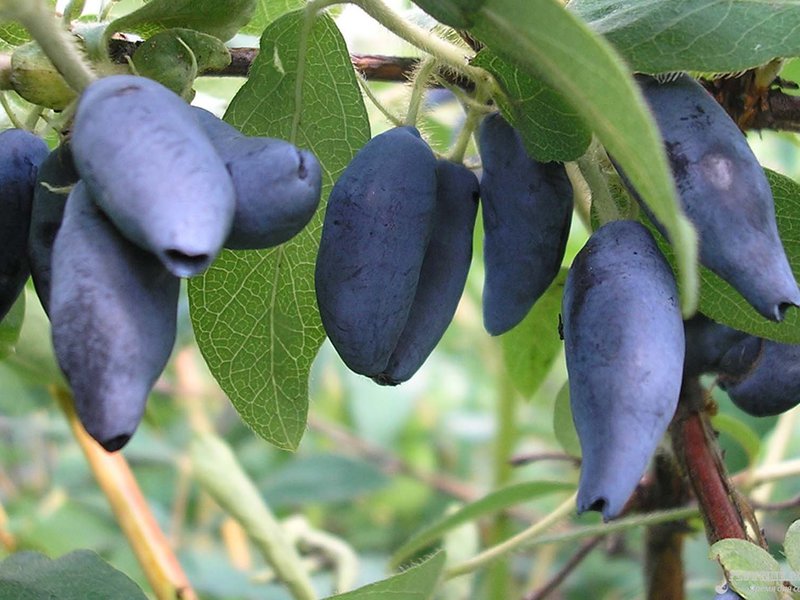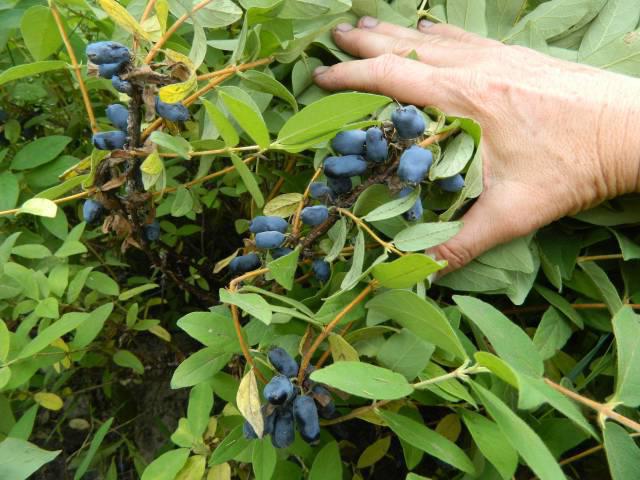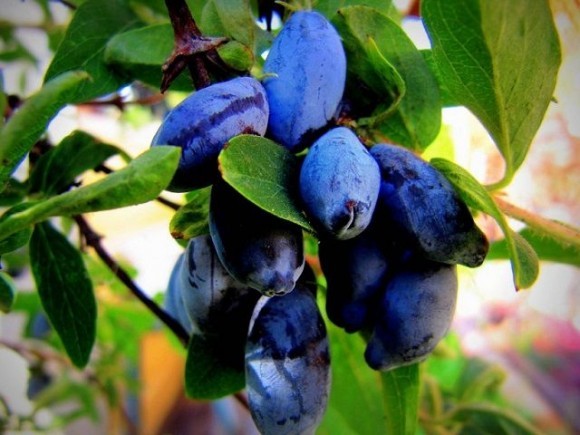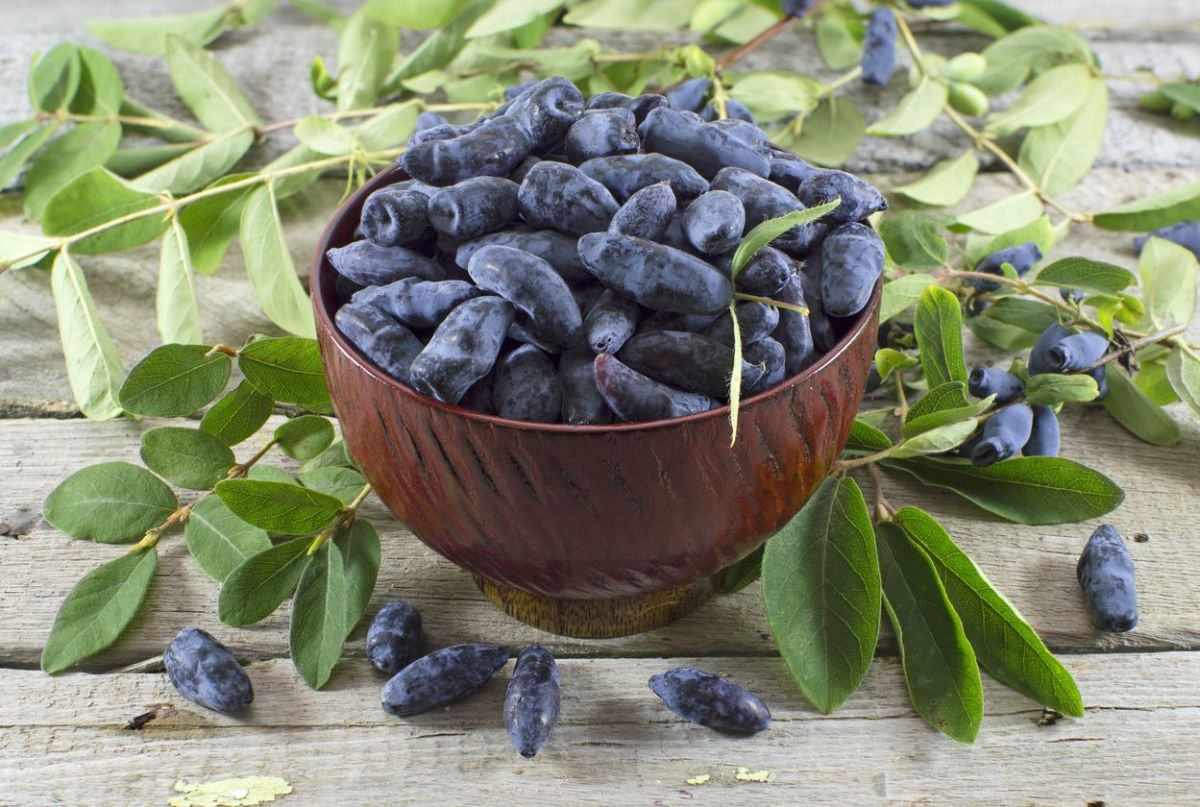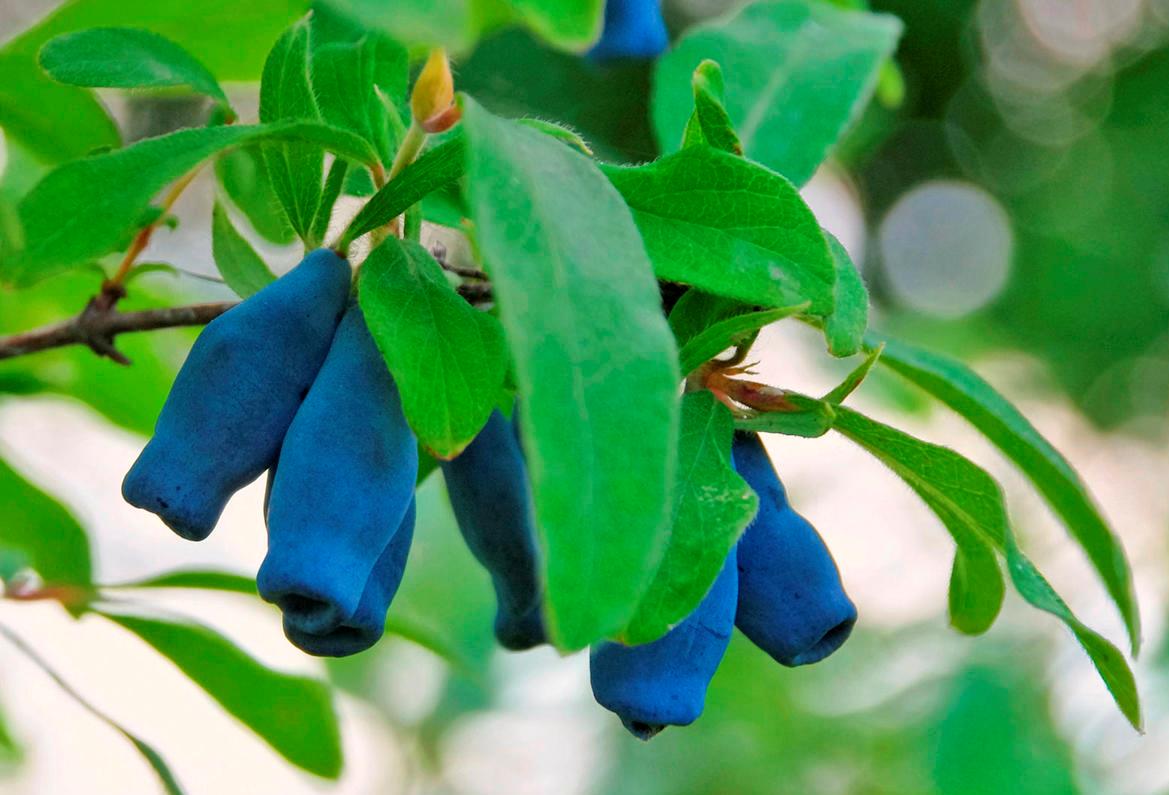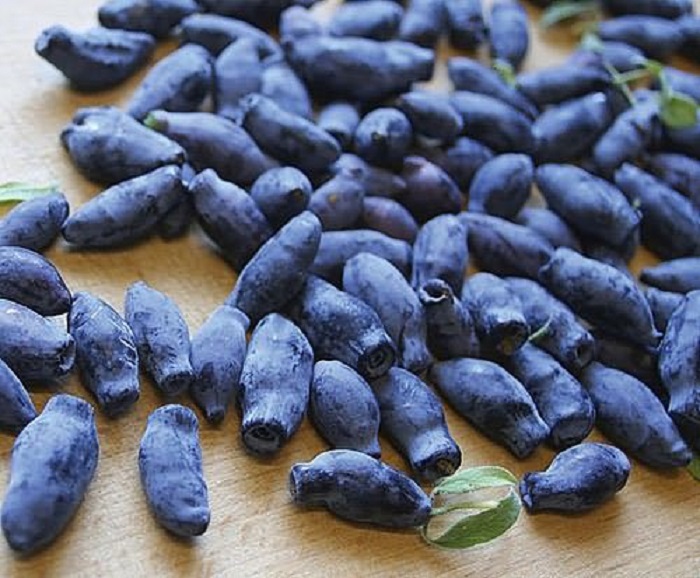The Berel honeysuckle variety ripens early enough, bred at the National Research Institute of Horticulture in Siberia. Through the selection of Blue Bird, Blue Spindle and Azure, an edible variety called Berel honeysuckle was created, which has high yields, rich taste characteristics and contains a large amount of vitamins.
Features of the variety
Honeysuckle bushes of the Berel variety are vigorous, spreading, tall and erect. Their crown is oval. The leaves are large, oval and green in color. The leaf blade is curved with a boat, one edge is wavy. The shrub blooms in May and does not suffer from recurrent frosts. The flowers are large, with a pink tint.
Shrub shoots are thick and long. The shrub bears fruit with large conical berries. The color is dark blue, almost black. There is a strong waxy coating on the fruit. The weight of one fruit can reach one gram. It tastes sweet and sour. After heat treatment, the bitter taste disappears. The harvest period is June-early July.
Honeysuckle Berel has a high yield - from one bush you can collect from three to five kilograms of berries. The shrub begins to bear fruit from the age of 3. The features of this variety include high winter hardiness and low shedding.
The variety is self-fertile. The pollinator for honeysuckle is a Kamchatka species. He must grow with Berel in the same area. Only under such conditions will insects be able to pollinate the bushes.
Landing
Following the varietal cultivation technology, you can grow a healthy plant that will delight you with an excellent harvest. Choosing a planting site is a crucial moment in the process of preparing a plant for planting. Honeysuckle needs to find a place where there is a lot of sunlight. With its lack, the berries become sour, and the yield indicators decrease. When planting honeysuckle from the north, it is advisable to plant shrubs along a hedge or fence. Wind protection will only benefit.
The plant does not like stagnant water. If there is a risk of waterlogging the shrub, it is better to drain it right away, otherwise the roots may rot.
Important! Soil acidity should not exceed pH 6-6.5.
It is recommended to plant seedlings in autumn, because honeysuckle is an early plant and wakes up in early spring. The optimal period is late September-early October. Before planting, you need to dig holes and prepare them. The depth is up to 40 centimeters, the distance between the bushes is at least 1.5 meters.
Before planting a seedling, the soil should be fertilized with humus and double superphosphate and wood ash should be added. At the bottom of the pits, form a small hill, and install a seedling on it. This is to minimize the chances of direct contact of the root system with fertilizers. Further, the roots are straightened and covered with loose earth. At the end, the seedling must be watered; it is not recommended to bury it in the ground.
Care rules
Like any plant, honeysuckle needs feeding. This must be done in the spring, you can use organic, mineral fertilizers. Nitrogen fertilization can be done until mid-June. In autumn, during digging, it is recommended to bring in wood ash.
From the middle of summer, the plant begins to prepare for winter, and a slowdown in shoot growth is observed. In the same period, the leaves of the bush turn brown and crumble. Don't worry about this - it's a natural process.
Important! Water balance should be observed. Watering once a week at the rate. Recommended dose: for one adult bush - one bucket of water.
Proper pruning is an important element in honeysuckle care. It allows you to increase fruiting and berry size. Pruning recommendations:
- For better branching, it is recommended to tame the branches a little before planting in the ground;
- It is necessary to cut off the branches of an adult shrub in the spring, before budding, or in late autumn;
- Old and diseased shoots must be removed;
- If the branches grow close to the ground, so that the berries fall on it, then they are cut off without fail;
- To rejuvenate the old shrub, it is recommended to cut off several large old branches annually. It is undesirable to completely cut the shrub, it will be very stressful for it and can lead to death.
Pests and diseases
This type of honeysuckle affects pests such as aphids, ticks, scale insects, fingerwing and other leaf-eating parasites. Of the diseases, fungal infections and phytoviruses are especially dangerous. Traditional methods and modern chemicals will help in the fight against them. The most effective are infusions of garlic, tobacco and pepper. From industrial chemicals in the fight against pests, "Aktara" and "Eleksar" have proven themselves well.
High air humidity is dangerous for honeysuckle because it increases the risk of fungal infections, such as powdery mildew. Cope with them will help a solution of copper sulfate or the drug "Topaz".
Pros and cons of the variety
Like any variety, the description of the Berel honeysuckle plant has its advantages and disadvantages. Experienced gardeners note the absolute absence of problems in the process of planting and caring for shrubs. The plant requires minimal maintenance, which guarantees a good berry yield.
Another advantage is the benefits that the fruits have. The composition includes a large amount of vitamins and minerals that are extremely necessary for the human body. From the fruits of the bush, not only useful, but also tasty preparations for the winter are obtained: jams, preserves and simply frozen fruits.
Honeysuckle Berel is an early variety. Its berry ripens the very first. This allows you to feel the taste of summer much earlier. High yield and long fruiting period allow you to enjoy the sweet and sour taste of healthy berries.
Among the shortcomings, it is worth noting a slight bitter aftertaste, although many even like it. Heat treatment eliminates this disadvantage. Therefore, berry jam and jam are surprisingly sweet.
Some gardeners attribute the self-infertility of the plant to the disadvantages. Because of this, it is necessary to plant 2 types of shrubs in the same area. But in this case, there will be twice as many useful berries.
